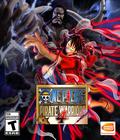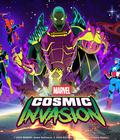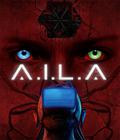
Genre: RPG
Publisher: 2k Games
Developer: Bethesda Softworks
Release Date: March 20, 2006
Buy 'THE ELDER SCROLLS IV: Oblivion':
X360 | X360 Collector's Edition | PC | PC Collector's Edition
 There are few series that not only stand the test of time, but also manage — sometimes by pure accident, sometimes by design — to grab the industry by its hair and shake it about like a rag doll on a stick, pounding into its poor skull that it needs to change while showing it exactly what change needs to come. Fewer still are those that manage, each time they come around, to again point out the same strong style, design, and gameplay that make them winners every time. The Elder Scrolls is one of them, and despite some stumbles brought about by the epic scope, Oblivion dishes out a heaping helping of medieval romp 'n' stomp that will leave you bloodied, battered, breathless, and better for the trip.
There are few series that not only stand the test of time, but also manage — sometimes by pure accident, sometimes by design — to grab the industry by its hair and shake it about like a rag doll on a stick, pounding into its poor skull that it needs to change while showing it exactly what change needs to come. Fewer still are those that manage, each time they come around, to again point out the same strong style, design, and gameplay that make them winners every time. The Elder Scrolls is one of them, and despite some stumbles brought about by the epic scope, Oblivion dishes out a heaping helping of medieval romp 'n' stomp that will leave you bloodied, battered, breathless, and better for the trip.
It begins, as all TES titles do (did anyone else notice this?) in a prison cell. Lost, forgotten, and completely ambiguous, your poor avatar is doomed to rot until their impending execution deep beneath Cyrodil's Imperial City. But before you can call Johnny Cochran on your time-bending cell phone, the man himself kicks open the door — Emperor Uriel Septim. The man who runs the whole blasted country is running for his life from shadowy assassins; they've already managed to kill his three sons, a huge portion of the Imperial Guard, and even a group of his sworn protectorate, The Blades. Their only way out just happens to be a secret hole in the wall of your very prison cell, and to be perfectly honest, they're not in any position to stop you from following along for the ride. And so it begins, more in the vein of Arena's spiritually guided escape from a dungeon than Morrowind's simple hop from a prison transport vessel.
Most of the character design happens even before the first event, using a significantly more advanced tool than previous entries; players of games like the SocialMMO Second Life will feel pangs of similarity as they play about with sliders, adjusting facial features and skin tones. Only your birth sign and class come later, the former determined by just a selection, while the later is "guessed" based on your progress through the tutorial dungeon. (It may be a poor player of poker, if you follow — it watched me bash and smash my way through, swinging the heaviest of weapons and wearing the thickest of armor, and chose I should be ... stealthy and magical. Yea, verily.)
Thus begins another rather open-ended trip into the hills and valleys of Tamriel. As soon as your eyes meet the sun over the Cyrodil countryside, anything resembling a guiding hand immediately vanishes. This is your playground, several scale miles of it; you're free to go anywhere, do near anything, and in any order you'd like. There are cities to visit, shops to peruse, people to see, ruins to poke your nose into, diseases to catch, and damsels in distress that may just require your intervention on their behalf. Yes, if you're an idiot or overstep your abilities, you can quite certainly get yourself killed or earn a prison cell with your name engraved permanently above the archway, but that's just giving you consequence for your actions; nothing comes without a cost, good, bad, or otherwise.
All the while, your character develops his skills in the way you use them. Run around a lot, and you'll develop Athletics. Jump about and climb where only eagles dare to hang around, and you'll turn into an Acrobat. If things hit you, you'll take damage, but you'll also gain an affinity with the type of armor you're wearing (light or heavy — sorry friends, but medium is a no-show). So it goes — the kind of character you can develop is determined in a large part by your choices and your playing style. If you decide that you've had enough of the main plotline for a bit, then ignore it. There are dozens, if not hundreds, of side quests to take on, and with absolutely no time limits. Characters do not age, they do not die, and — while it would be interesting — the evil is not plotting behind your back in real-time. Sit back, enjoy, and watch the world work its magic.
The game itself will smack so hard of familiarity that many veteran players of Daggerfall and Morrowind, especially, may have to check and make sure they installed from the right disc. (Yes, singular.) Skills and abilities still improve by being used, both first- and third-person views are available, and the crafting system feels much the same. Enchantments are still every bit as pivotal as they were in Morrowind, but what makes the difference is all the little things have come along for the ride: shields are no longer automatic, but require you to manually block incoming slings and arrows of outrageous fortune (or just butt-ugly ogres); a pair of mini-games replace skill checks for Speechcraft and Lockpicking, making the former ridiculously easy and the latter stupid amounts of hard; horses enhance your footspeed and act as a meat shield if you need that sort of thing; and possibly most of all, the entire quick-transit system provided about Morrowind is history, covered by the return of the Fast Travel option, for the most part.
Combat has received a major overhaul, yanking out the functional-but-inconsistent waving fest that caused undue frustration and some disjointment in installments past. The first thing you'll notice: when you swing, you hit, and if you hit, you do damage. Low skill no longer keeps you from hitting, but it does determine exactly how much damage you'll do, along with a small litany of side effects, ranging from knocking your target flat on their keister to pulling the weapon right out of their hands. Most of all, the player's actual timing, both in blocking and attacking, has much more bearing on how fights work out than it ever has before. Prepare to get your bum returned to you via FedEx for quite some time before it starts to feel natural. This "restrict the results, not the application" theory spreads itself out into other elements, too. Armor no longer has any sorts of restrictions, but if you're not good with that class of armor, it'll wear out faster and slow you down, while the crafting skills now simply alter their chances of success or failure based on your abilities. This all gets together and whips out a concoction that's more natural than it's ever felt before.
What will probably strike most mortals with mental blocks is the journal. Does anyone remember how often the poor Xbox players complained about how the interface for Morrowind was far too complex for their controllers, and it was so unfair? This time, it'll be the PC players doing all the complaining, because the new "subscreen" is dumbed-down and clunky but perfect for the Xbox 360 players and their controllers. Everything is now happily contained within one screen, accessible (by default) with the Tab key; clicking on various portions of the lower bar switches between the various areas. Clicking again on icons above that area switches between subsections of each major element. It's sluggish and tedious to try and wade through, and most of all, it pauses the gameworld — gone is drag and drop discards or walking around with your map open (which is pointless since, it now takes up the whole screen). Maybe I'm picking nits here, but I would have waited a bit longer to get a "PC-centric" journal. Then again, given the toolkit, maybe one is in the works.
Moreover, that point is something everyone should be watching. Bethesda, in a move of obvious smartitude, released the new toolset a few days before the game actually hit stores (officially or otherwise). The net result? Within days of the initial release, players already had a quick grasp on the tools and were putting out simple and not-so-simple mods. Initially, it was done to correct shortcomings in the game itself, but more recently, the forums have started to show signs of new content, simple and short at first, and it's still early in Oblivion's lifespan. It bodes well, and it can only go uphill from here.
However, this has all danced around the biggest "selling point" of much of Oblivion's ad copy: the engine. On the audio side of things, it's really hard to find much to fault; the music consists of moving orchestral riffs that are standard fare in the fantasy realm, and sound effects are certainly in attendance, with great clashing swords and explosions running rampant. Even the voice acting is worth listening to, though it's all too obvious that only a handful of actors handle the minor characters, and a few of them are rather difficult to listen to continuously.
The graphics, on the other hand, are hard to rank as anything less than amazing, as long as you have the horsepower to render them. My poor machine, which was more than capable this time last year, can manage good framerates if I kiss many of the best features good bye. I'm still able to enjoy the experience and marvel, as it certainly looks good, but those who have the powerhouse video cards and sent-by-a-rich-angel processors will find some of the best lighting, texturing, and modeling around. Screenshots simply can't express it, but when these graphical elements all come together, they make a coupling that's a step past eye-catching. Shadows and light beams bend around foliage and into windows, surfaces reflect images in the most pleasing way I've seen in ages, grass blows around the landscape. It's a real world for once, not just a set of polygons stuck together, pretending to be one. The facial animations have come eons from Morrowind's often-criticized chunky skulls and unanimated lips to looking — especially at the best settings — as close to real as anything has yet.
 It's not often that I gush over a game, but I find it hard to find a critical word for The Elder Scrolls IV: Oblivion when it works like it should. It's not safe from a small list of issues, like mis-rendered water, the very rare corrupted save, and the rarer still misfire in the scripting system (from which the main plot seems to be able to recover). I've had a few crashes and some glitches, but much of this seems related to graphics drivers (get the best drivers you can find, trust me, especially if you have a 6000 or 7000 series GeForce card) and task switching (a cardinal sin in any game of this magnitude, and one I commit regularly, even with the consequence). All of that added together does not diminish this game. Oblivion is one of the best packages of the past several years, with no element even average; everything is as close to perfect as can be expected, and even a few odd bits here and there can be dealt with well enough. Anyone with even a passing interest in this title should get this game as soon as humanly possible. You will not regret it. Bethesda, you may only release a few titles and release them with huge gaps between, but you are a superstar nonetheless. I salute you.
It's not often that I gush over a game, but I find it hard to find a critical word for The Elder Scrolls IV: Oblivion when it works like it should. It's not safe from a small list of issues, like mis-rendered water, the very rare corrupted save, and the rarer still misfire in the scripting system (from which the main plot seems to be able to recover). I've had a few crashes and some glitches, but much of this seems related to graphics drivers (get the best drivers you can find, trust me, especially if you have a 6000 or 7000 series GeForce card) and task switching (a cardinal sin in any game of this magnitude, and one I commit regularly, even with the consequence). All of that added together does not diminish this game. Oblivion is one of the best packages of the past several years, with no element even average; everything is as close to perfect as can be expected, and even a few odd bits here and there can be dealt with well enough. Anyone with even a passing interest in this title should get this game as soon as humanly possible. You will not regret it. Bethesda, you may only release a few titles and release them with huge gaps between, but you are a superstar nonetheless. I salute you.
Score: 9.8/10























































